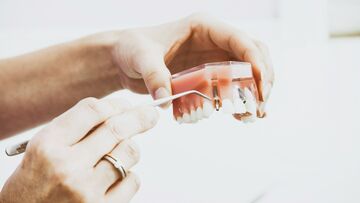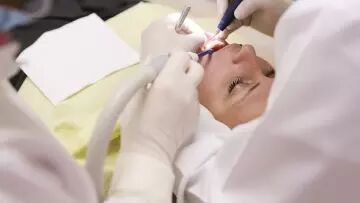Tooth loss can occur for a number of reasons. We will always make extraction the last resort, but sometimes it is the only option to preserve your oral health and the health of surrounding teeth. Gaps in your smile aren’t the end of the world, but they should be avoided if possible.
Gaps at the front of your mouth can damage your confidence and make you reluctant to smile. There is also the risk that the surrounding teeth could shift out of the proper alignment, leading to issues with your teeth and gums. And finally, the opposite teeth can also suffer, as they will not have any opposing force, which can lead them to also shift out of alignment.
In order to ensure that you are not left with an unsightly gap that can affect your confidence or lower your self-esteem there are a number of different options available. In this article, we will look at each of the options in turn.

1. Do nothing
If the tooth is not visible when you talk and smile and is not required for you to eat with comfort, it may be possible to leave the gap. The dentist will keep a close eye on the gap and will monitor it each time you attend your routine visits.
There is the possibility that the teeth on either side of the gap may shift and move affecting your bite and causing discomfort. It is also possible for food to become trapped between the remaining teeth and if left untreated this can lead to potential tooth decay and gum disease.
Doing nothing and leaving a gap in your mouth is certainly a possibility, but it’s important to make sure you have regular check-ups to keep an eye on your wider health.

2. A denture
A denture can be made to replace one or more missing teeth. They can be made of metal (chrome) or plastic (acrylic) and have the added advantage that they can be fitted immediately after the tooth is extracted.
This means that you will not have to worry about a gap at all. If the denture is fitted immediately after the tooth is extracted it will need to be relined or remade after 4 – 6 months as your gums will shrink following the extraction and this can cause the denture to become loose and poor fitting.
For added security, clasps can be added to the denture which fixes your remaining teeth and helps to stabilise the denture. You can also use denture adhesive to fix the apparatus in place and avoid it moving when you speak or chew.
A denture needs to be removed at night, so you cannot sleep with it in. You will also need to clean it to avoid bad smells due to the buildup of bacteria on your denture.

3. A Dental Bridge
A dental bridge is made by putting crowns on the teeth on either side of the missing tooth or teeth and joining them together with a false tooth or teeth to create the appearance of a full set of natural teeth.
A bridge is made by the laboratory technicians from impressions taken of your mouth and will be cemented in place so that it cannot be removed. A traditional bridge is made up of two crowns and a pontic in the middle.
The bridge can also be connected to adjoining teeth using a metal wing in the back. This is the weakest type of bridge and the most likely to fall out. However, a lot of patients like this option as it means we don’t have to prepare the surrounding teeth.
With a traditional bridge made up of two crowns and a pontic, the disadvantage of this is that it is necessary to prepare healthy teeth in order to put the bridge in place. Bridges would normally be expected to have a life expectancy of 7 – 10 years. After this time, you will either need to replace the bridge or choose an alternative tooth replacement option.

4. Implant
A dental implant can be used to support one or more false teeth either with a crown, a bridge or dentures. Implants are a long-established treatment and if cared for properly should last as long as your natural teeth.
A titanium screw is placed into the jaw to support the restoration so it is necessary to complete a detailed examination of the jaw to determine the levels and health of the bone present.
If there is not enough bone it may not be possible to proceed with implants without first having a bone graft. It will be necessary to give the gum time to heal following an extraction before implant treatment can start.
Once started it takes around 3 – 4 months from the time the implant is placed for the full restoration to be completed as it is necessary to give the bone time to heal around the titanium screw. This helps to create a strong and sturdy foundation for the final restoration.
Implants are growing in popularity as a way to replace missing teeth in a way that looks, feels and functions just like a natural tooth.
With all the options available there is now no reason to be embarrassed by a missing tooth. If you would like to discuss the possible options to fill gaps caused by extracted teeth, call Leigh Dental Centre on 01702 472929 and book a consultation appointment today.
Contact us to make an appointment
Exclusive Offer
Airflow stain removal from our hygienist


Benefits of Dental Implants
10.04.2024

Replacement for a Missing Tooth
04.11.2023
Time for you perfect smile?
Book your consultation today
When visiting our practice you know you are visiting the dental professionals trained to the highest standards. You are greeted by our welcoming staff, who share the same aim, to make your visit with us as comfortable and stress free as possible.





